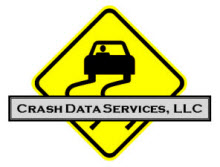Drummed into my head as a schoolchild was the mantra, "Cross at the Green, Not In Between." This slogan still provides the basis for Today's thinking about following the pedestrian path to and from school or a student's bus stop. When last year, a study of 7,000 pedestrian accidents in New York City over a four-year period was released, its findings turned this century-old cliché on its head. The implications for the pupil transportation industry are dramatic, and should awaken all of us to a new reality that may save hundreds if not thousands of lives a year, since most vehicle-pedestrian accidents happen to students walking or cycling to school, as well most of those traveling by schoolbus who are struck when crossing by third-party vehicles.
The NYC study's findings were dramatic and forcefully stated," ...even for adults, crossing at a signalized intersection is significantly more dangerous than Jay-walking across a street at a mid-block position." This study found, astonishingly, that a far greater percentage of vehicle-pedestrian accidents occurred at intersections than at mid-block positions. In other words, it was almost exponentially safer to Jay-walk than to cross at the corner! Admittedly, this study included adults as well as children of all ages. Unfortunately, its two summaries in the New York Times - where most New Yorkers learned about it - failed to point out that this principle stemmed largely from the fact that most Jay-walkers cross narrow, one-way streets with parking on both sides and only a single lane of traffic moving in a single direction. The statistics would not likely have been the same if most of the victims had crossed Manhattan's six-to-eight-lane avenues, often with five or six travel lanes (sometimes in both directions).
Implications for Educational and Public Transportation Policy
Ironically, the NYC study's findings are largely consistent with many pupil transportation practices, and more importantly, consistent with findings about the crossing abilities of schoolchildren. Our community has known that locating schoolbus stops at mid-block positions on lightly-used side streets is usually safer than locating them at intersections - particularly signalized intersections, where the conflict between the bus' flasher engagements and traffic signals confuse even motorists, much less children. A famous Swedish study conducted in 1968 (Children in Traffic) found not only that children below age 13, and particularly below age 10, are not capable -- as a result of their age and development -- of crossing streets, and further, find crossing intersections to be far more complex than crossing simple streets at mid-block positions (i.e., Jay-walking). The NYC study added a new perspective of scientific credibility to this reality.
Even recognizing the difference between side-streets and avenues - a difficult concept for elementary and middle school children to grasp - it is either impossible or unrealistic to expect a walking-to-school child's path to involve solely mid-block crossings and avoid intersections altogether. Doing so would almost invariably involve extensive back-tracking, and in many cases opportunities to cross side street after side street would not even exist. However - and I am not insensitive to the resource implications of this suggestion - the safety implications of the NYC findings are so critical that schools should consider giving thought to defining the path to and from school for every child walking - children not even taking schoolbuses. Similarly, for those students riding to and from school by schoolbus (or any kind of bus), thought should be given to defining the paths these children take to reach and return home from their stops.
This is a tall order, in economic terms, for schools used to employing software to select bus stops, ignoring the paths to the stops altogether, and whose drivers' logs rarely even notate which students will be crossing to or from their respective bus stops. Not being responsible for operating schools on an increasingly limited budget, I am not going to pontificate to school districts about spending priorities. But frankly, how much are 1000 students' lives and 10,000 serious injuries a year worth? What percentage of these injuries would likely be prevented were such steps taken (my thinking is most)?
Kinks and Quirks
The New York City study also noted that Today's pedestrians are often using cell-phones when crossing streets and intersections, or worse, listening to music though the headsets of their i-pods or even "texting." Similarly, many motorists and taxi drivers are also doing these same things while driving. Otherwise, the study noted that Jay-walkers were involved in far fewer accidents than their "law-abiding counterparts who waited for the walk sign" [at signalized intersections, often with "pedestrian crossing" buttons].
Traffic Volume, Speed and Incident Frequency
Among the nearly 60 crossing incidents I have examined in great detail as an expert witness, I have noted a large number of fatalities and serious injuries occurring at mid-block positions along wide, high-speed arterial roadways. Keep in mind that oncoming motorists are not required to halt in response to a schoolbus' red flashers or extended stop arm on four- or more-lane roadways with a median barrier - even though mid-block, schoolbus stops are often designated along many such roadways. Keeping in mind the distinction noted above about the difference between Jay-walking across a tiny, "local" side-street and a six-lane-wide avenue, one can see why the NYC study's findings so closely reflect my own findings about the risks associated with mid-block stops located on these very types of roadways. Clearly, the high frequency of "pass-bys" tends to negate the value of schoolbus crossing equipment in protecting students crossing such roadways.
Another factor greatly impeding solutions to this problem is the fact that we cannot conceivably redesign our nation's entire street and highway network to address them. As a practical reality, particularly in rural areas, or frankly anywhere that most students live within a few blocks of a high-speed arterial street whose use streamlines the speed and cost of transporting students to school, we cannot possibly afford the cost of, and students cannot afford to bear the increased ride times associated with, weaving schoolbuses in and out of side streets simply to avoid mid-block stops on high-speed thoroughfares that dominate the landscape. The obvious answer is that we must try to minimize mid-block stops on high speed roadways, and where we cannot, we must take what measures we can to increase our vigilance at such stops. I have cited many of these steps in past STN articles in this series - such as identifying students who need to cross on drivers' logs - as I will continue to do so in future articles. But perhaps without going to the extreme of Rhode Island (where every K-8 student's bus must contain a bus monitor or attendant) or California (where drivers must cross every K-8 student), the best solution may be to either have the driver cross all K-8 students, or place a bus monitor on every bus route, where mid-block stops will occur on a high-speed, four- or more-lane roadway. Far less costly would be to simply eliminate mid-block stops on high-speed roadways, and instead, place them only at intersections - even given the problems intersections appear to present in the NYC study, and despite the significantly longer walking distances many students will experience in traveling between their homes and these bus stops - itself a trade-off that will likely result in more fatalities and serious injuries, as there will now be more streets altogether that these students would have to cross.
The New York City study is indeed troubling. But it is real, and its implications cannot be ignored if we are to accept our responsibility for safeguarding the wellbeing of tens of millions of our most vulnerable citizens whose street-crossing safety lies largely in our hands. As a starting point, I would hope that this new information will be thought-provoking enough to at least trigger the serious, detail-oriented dialog about crossing safety that is long overdue.
Ned Einstein is the President of Transportation Alternatives, a passenger transportation and automotive consortium engaged in consulting and forensic accident investigation and analysis (more than 600 cases). Specializes in elderly, disabled, schoolchildren. Mr. Einstein has been qualified as an Expert Witness in accident analysis, testimony and mediation in vehicle and pedestrian accidents involving transit, paratransit, schoolbus, motorcoach, special education, non-emergency medical transportation, taxi, shuttle, child transport systems and services...
©Copyright - All Rights Reserved
DO NOT REPRODUCE WITHOUT WRITTEN PERMISSION BY AUTHOR.










